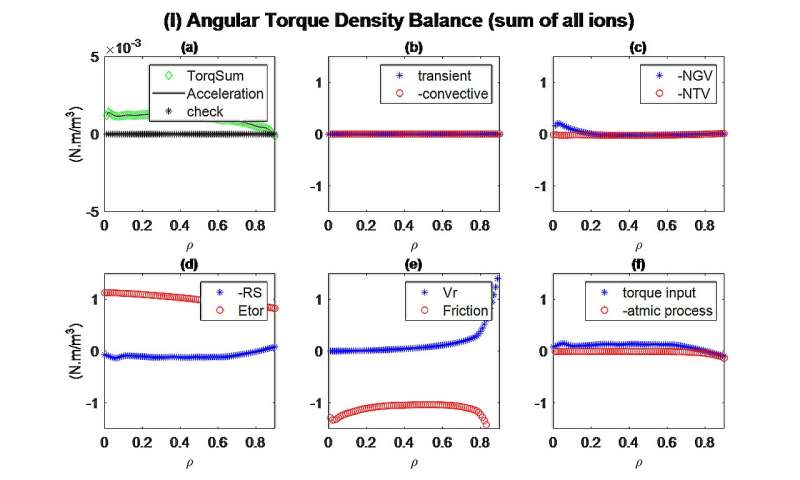This article has been reviewed according to Science X's editorial process and policies. Editors have highlighted the following attributes while ensuring the content's credibility:
fact-checked
trusted source
proofread
New code developed for tokamak plasma rotation and transport analysis

A team led by Prof. Lyu Bo and Dr. Bae Cheonho from the Hefei Institutes of Physical Science of the Chinese Academy of Sciences has developed a new code to analyze the multi-fluid plasma rotation and transport properties in tokamak plasmas, including the Experimental Advanced Superconducting Tokamak (EAST).
The work was published in Computer Physics Communications.
"We named this computational code TransROTA," said Dr. Bae, "it provides calculations of all the torque terms in the angular momentum balance in toroidally rotating tokamak plasmas, thereby increasing the prediction accuracy of unmeasurable ion velocities and enabling investigations of many interesting plasma physics."
Plasma rotation plays a critical role in fusion experiments, particularly in controlling Magneto-hydrodynamics instabilities, suppressing turbulence growth, and influencing processes such as L-H transitions and impurity transport. Predicting and controlling the plasma rotation speed is a key challenge for achieving stable and high-performance operation.
In this study, the researchers modified the Stacey-Sigmar plasma rotation model to make it less susceptible to numerical instability, applied improved numerical schemes, and tested it with various EAST discharges.
The modification improved the resistance of new couplings between all solved equations to numerical blow-up. The effectiveness of this synchronization was verified, making the code suitable for most plasmas generated by modern tokamaks.
As a result, TransROTA became a user-friendly code that not only calculated the rotation velocities of important ions but also predicted individual torques in the angular momentum balance. The available calculations from TransROTA provided an excellent tool for investigating detailed physics studies and can be used in combination with the reduced model approach to maximize its capabilities.
The development of this program lays the foundation for conducting further theoretical and simulation research, according to the team.
More information: Cheonho Bae et al, TransROTA: A code for solving collisionality-extended Braginskii's closure formalism for toroidally-rotating plasmas with nonlinear successive overrelaxation, Computer Physics Communications (2023). DOI: 10.1016/j.cpc.2023.108992
Provided by Chinese Academy of Sciences




















